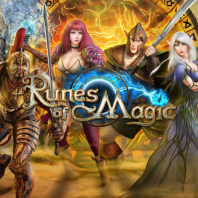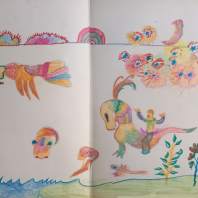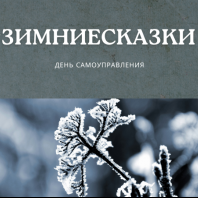Педагогическая катастрофа
 just_tom — 22.12.2013
Тут нам давеча сообщили, что польские школьники - одни из лучших в
мире. В последних тестах PISA для
пятнадцатилетних детей они заняли очень высокие места: девятое
в точных и естественных науках, десятое - в понимании текста и
четырнадцатое - по математике. Среди европейских стран -
соответственно третье, третье и шестое. Все желающие
могут попробовать решить математические задачи. Я прошёл шесть
уровней и мне надоело. Потому каждый следующий уровень был труднее
предыдущего, а шестой был такой:
just_tom — 22.12.2013
Тут нам давеча сообщили, что польские школьники - одни из лучших в
мире. В последних тестах PISA для
пятнадцатилетних детей они заняли очень высокие места: девятое
в точных и естественных науках, десятое - в понимании текста и
четырнадцатое - по математике. Среди европейских стран -
соответственно третье, третье и шестое. Все желающие
могут попробовать решить математические задачи. Я прошёл шесть
уровней и мне надоело. Потому каждый следующий уровень был труднее
предыдущего, а шестой был такой:ВЕЛОСИПЕДИСТКА ЕЛЕНА
У Елены новый велосипед. На руле у него спидометр. Спидометр показывает Елене расстояние, которое она проехала, и среднюю скорость за поездку.
ВОПРОС:
Елена поехала на своём велосипеде от дома к реке, которая находится на расстоянии 4 км. Это заняло 9 минут. Домой она поехала более короткой дорогой - 3 км. Она доехала всего за 6 минут. Какова была средняя скорость Елены на пути от дома до реки и обратно?
На этот вопрос правильно ответило 5% польских школьников. Среди победителей - школьников из Шанхая (который считается почему-то отдельно от остального Китая) - правильных ответов был 31%
Я удивился, потому что последний раз математику учил в школе в восьмом классе, то есть в 1975 году, а задачу решил в уме в течение минуты или двух. Сегодня я решил показать её своим студентам как иллюстрацию того, что нечего радоваться таким успехам. Из моих студентов задачу не решил никто. Один даже выбрал правильный алгоритм, но в ответе ошибся в два с лишним раза.
Куда катится мир.
Update: может, это просто я такой гениальный? Потому что от описания, какими знаниями и умениями надо обладать, чтобы ответить на этот вопрос, захватывает дух.
Question Level
At Level 6 students can conceptualise, generalise, and utilise information based on their investigations and modelling of complex problem situations. They can link different information sources and representations and flexibly translate among them. Students at this level are capable of advanced mathematical thinking and reasoning. These students can apply this insight and understandings along with a mastery of symbolic and formal mathematical operations and relationships to develop new approaches and strategies for attacking novel situations. Student at this level can formulate and precisely communicate their actions and reflections regarding their findings, interpretations, arguments, and the appropriateness of these to the original situations.
Question Category
This item belongs to the change and relationships category. The natural and designed worlds display a multitude of temporary and permanent relationships among objects and circumstances, where changes occur within systems of interrelated objects or in circumstances where the elements influence one another. In many cases these changes occur over time, and in other cases changes in one object or quantity are related to changes in another. Some of these situations involve discrete change; others change continuously. Some relationships are of a permanent, or invariant, nature. Being more literate about change and relationships involves understanding fundamental types of change and recognising when they occur in order to use suitable mathematical models to describe and predict change. Mathematically this means modelling the change and the relationships with appropriate functions and equations, as well as creating, interpreting, and translating among symbolic and graphical representations of relationships.
|
|
</> |

 Простые шаги для покупки внутриигровой валюты в Руны магии
Простые шаги для покупки внутриигровой валюты в Руны магии  Булочки.
Булочки.  Что вырежут из новогодних фильмов?
Что вырежут из новогодних фильмов?  про прошлое
про прошлое  День самоуправления #5 в марафоне #ЗИМНИЕСКАЗКИ
День самоуправления #5 в марафоне #ЗИМНИЕСКАЗКИ  Подборка смешных комментариев в соцсетях за 2024 год. Часть 6
Подборка смешных комментариев в соцсетях за 2024 год. Часть 6  Ежедневный дайджест марафона #зимниесказки — 22 декабря
Ежедневный дайджест марафона #зимниесказки — 22 декабря  Петербуржский портрет
Петербуржский портрет  Сказочные образы фильма "Финист. Первый богатырь" (2024)
Сказочные образы фильма "Финист. Первый богатырь" (2024) 



